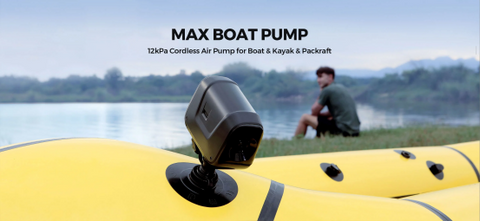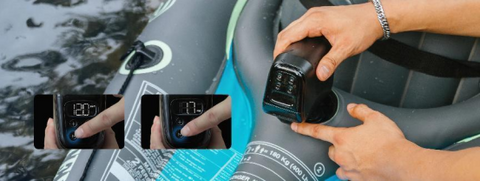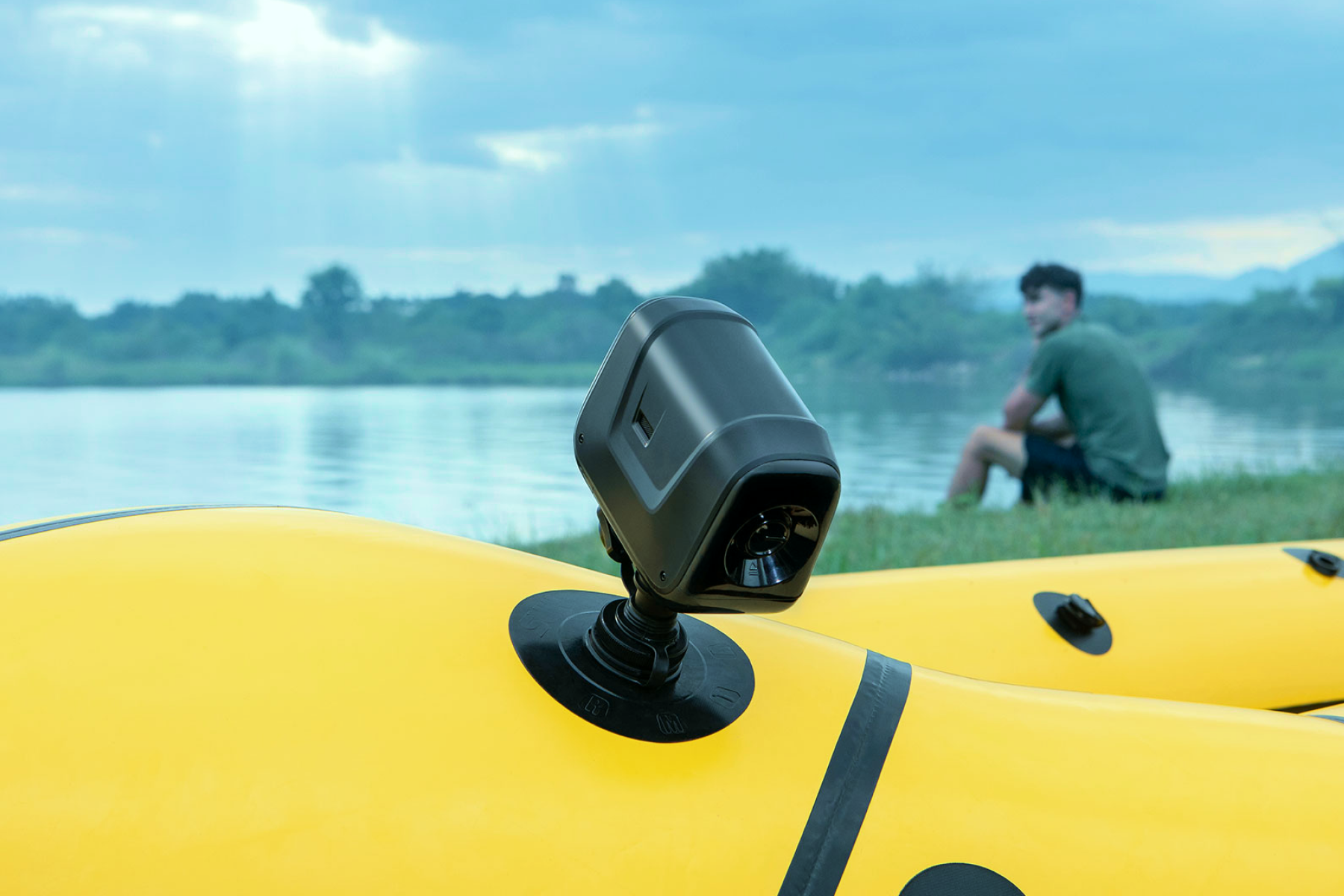In recent years, the popularity of inflatable boats has soared among water enthusiasts. These vessels are highly valued for their versatility in activities ranging from peaceful fishing in tranquil lakes to thrilling kayaking in rapid rivers. Their appeal is largely due to their portability, cost-effectiveness, and easy storage, making them a favorable option for both beginners and expert mariners. However, the key to maximizing the enjoyment and convenience of these boats lies in easy inflation and deflation, highlighting the crucial role of a reliable air pump. An effective air pump for inflatable boats not only saves time and effort but also contributes to the longevity of the boat by ensuring proper inflation.
As essential as it is, choosing the right air pump for your inflatable boat can be a daunting task, given the diverse range of options available in the market. From manual hand pumps to electric models, each type offers its unique advantages. This guide aims to demystify the process, providing you with all the information needed to make an informed decision. Whether you’re a leisurely rower or an avid adventurer, selecting the appropriate air pump can elevate your boating experience, ensuring that you spend more time on the water and less time on setup.

Different Types of Air Pumps
Navigating through the plethora of air pumps available for inflatable boats can be overwhelming. Understanding an air pump for inflatable boats and its functionality is key to making an informed choice. Primarily, air pumps can be categorized into three main types: Electric Air Pumps, Cordless Rechargeable Air Pumps, and Manual Hand Pumps. Each type comes with its own set of advantages and potential drawbacks, catering to various needs and preferences.
Electric Air Pumps
These pumps are known for their speed and efficiency. They require a power source, typically connecting to a car’s 12V outlet or a standard wall socket. Ideal for those seeking quick inflation, electric air pumps save time and reduce physical effort. However, their dependency on a power source can be limiting for remote locations without access to electricity.
- Advantages
Speed and Efficiency: Electric air pumps are typically the fastest way to inflate an inflatable boat, saving significant time and effort.
Ease of Use: Simple to operate, they often come with various nozzle sizes to fit different valves, making them versatile for different boat types.
Consistent Air Pressure: These pumps can inflate to precise specifications, ensuring optimal performance of the boat.
- Limitations
Power Source Dependency: Their reliance on an external power source (car outlet or wall socket) can be limited to remote or off-grid areas.
Portability: While they are efficient, carrying them around can be cumbersome, especially if they are bulkier or require a power source.
- Best Use Cases
Ideal for regular boaters: Ideal for those who have easy access to power sources and value quick setup times.
Suitable for larger boats: Suitable for larger boats that require more air volume, where manual pumping would be impractical.
Cordless Rechargeable Air Pumps
Cordless rechargeable air pumps blend the portability of manual pumps with the power of electric models, making them a versatile option for boaters. Ideal for locations with limited power access, these pumps come equipped with built-in batteries. While they provide significant power, it's important to consider their battery life, which may require strategic pre-trip charging to ensure uninterrupted use.
- Advantages
Portability and Convenience: These pumps combine the efficiency of electric pumps with the portability of manual pumps.
Rechargeable Battery: Eliminates the need for an immediate power source, making them suitable for remote locations.
Versatility: Can be used for a variety of inflatable products beyond boats, making them a useful tool for outdoor enthusiasts.
- Limitations
Battery Life: The operation time is limited to battery life, which requires planning and potentially carrying spare batteries.
Price: They can be more expensive than manual pumps and some electric pumps.
- Best Use Cases
Perfect for adventurers: Perfect for those who frequent off-grid areas but still prefer the convenience of an electric pump.
Suitable for those who prioritize flexibility and mobility in their boating excursions.
Manual Hand Pumps
Manual hand pumps are the classic choice, known for their reliability and independence from external power sources. Ideal as a backup or for use in situations where electric pumps aren't feasible, they require more physical effort and time but are typically more budget-friendly. These pumps are especially suitable for occasional or emergency use.
- Advantages
Independence from Power Sources: Free from the need for electricity or batteries, ensuring reliability in various settings.
Affordability and Reliability: Typically more cost-effective and less likely to experience mechanical failures than electric models.
Compact and Lightweight: Their smaller size and lighter weight make them easy to transport and store, ideal as a backup option.
- Limitations
Physical Effort Required: Manual inflation can be labor-intensive and time-consuming, particularly for larger boats.
Slower Inflation: Not the best choice for situations requiring quick and easy setup.
- Best Use Cases
Ideal for occasional boaters: Perfect for those who boat infrequently or are on a budget, and as a dependable secondary air pump.
Suitable for smaller boats: Works well for smaller vessels or for users who prefer a more hands-on approach to boat preparation.
In conclusion, the choice of an air pump for an inflatable boat largely depends on the user's specific needs, frequency of use, and the boating environment. Whether prioritizing speed, portability, or reliability, there is an air pump type that meets every boater's requirements.
Introducing FLEXTAIL Max Boat Pump
For the most efficient and hassle-free experience in inflatable boating, the FLEXTAIL MAX BOAT PUMP stands out as the best air pump for inflatable boats. Designed with the modern adventurer in mind, it ensures that the time-consuming task of boat inflation is transformed into a quick, effortless process. Its innovative design and features cater perfectly to the dynamic needs of boating enthusiasts, making it a reliable tool for various aquatic adventures. And now, let's dive into the details, because after all, the proof is in the pumping!

Key Features of the FLEXTAIL MAX BOAT PUMP
- Compact and Lightweight Design: The MAX BOAT PUMP is engineered for ease of transportation and storage, emphasizing its compactness and lightweight nature. This makes it an ideal choice for outdoor enthusiasts who require a portable, space-saving solution for their inflatable boats, ensuring that it can be easily carried on various adventures without adding significant bulk or weight.
- Rechargeable 2500mAh Lithium Battery: This pump features a robust 2500mAh lithium battery, providing the convenience of cordless operation. This rechargeable battery eliminates the need for continuous power supply, allowing users to inflate their boats in remote locations without worrying about finding an electrical outlet.
- High Pressure and Airflow Capabilities: With the ability to reach a high pressure of up to 12kPa (1.7 PSI)and a high-speed airflow of 142L/min, the MAX BOAT PUMP stands out for its efficiency. This capability ensures that inflating even larger boats is quick and effortless, significantly reducing the time and energy typically required for this task.
- 2-In-1 Easy Inflate & Deflate Function: The MAX BOAT PUMP is not just efficient at inflatingbut also features an easy deflate This 2-in-1 capability greatly enhances the convenience for users, as it simplifies the process of both setting up and packing away inflatable boats. This feature is particularly beneficial when time and ease of use are critical, streamlining the entire process and making it user-friendly.
- Intelligent System with Digital LED Display: The pump incorporates an intelligent system featuring a digital LED display. This system offers precise pressure control, enabling users to set the desired air pressure accurately. The auto-stop functionis a notable addition, as it automatically stops the pump once the set pressure is reached, preventing over-inflation and ensuring the safety and longevity of the inflatable boat.

- Versatile Compatibility with Boston Valves: The MAX BOAT PUMP is designed to be universally compatiblewith most Boston Valves inflatables. This versatility makes it a highly adaptable tool for a range of inflatable products, not limited to boats but extending to kayaks, packrafts, and other similar equipment.
- Efficient Inflation Capacity: One of the most impressive features of this pump is its ability to inflate up to 15 boats on a single charge. This remarkable efficiency makes it a reliable companion for extended trips and multiple inflations, ensuring that users can depend on it throughout their journey without the constant need for recharging.
The distinct features of the FLEXTAIL MAX BOAT PUMP, from its innovative design to its practical functionalities, clearly demonstrate why it stands out as the best air pump for inflatable boats for enthusiasts. Whether you're seeking efficiency, ease of use, or reliability, this pump encompasses all these aspects, ensuring a seamless and enjoyable boating experience.
Conclusion
In conclusion, choosing the right air pump for inflatable boats is key to enhancing your boating experience. With a range of options available, from electric and cordless pumps to manual hand pumps, each offers unique advantages. The FLEXTAIL MAX BOAT PUMP, with its blend of efficiency, convenience, and innovative features, stands out as an exemplary choice. Whether you're a seasoned mariner or a casual boater, investing in a suitable air pump like this can make your time on the water more enjoyable and less cumbersome. So gear up, set sail, and here's to happy boating!
 EN
EN JA
JA






